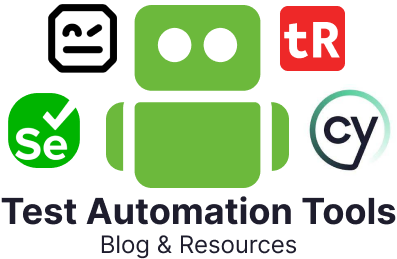
Table of contents:
In today’s times, you need an easy way to test your applications. Why? Because you need to keep up with the extensive and complex requirements of software testing in a very short time frame. Moreover, with Agile and other such collaborative development styles employed, you want to utilize your entire team to ensure QA. Having no-code test automation tools is a good way to ensure and promote such user engagement. This brings us to one popular tool that helps with no-code test automation – Preflight.
What is Preflight?
Preflight, now integrated with Applitools, is a no-code test automation platform designed to empower individuals across development, QA, and business teams to create, execute, and maintain automated tests for web applications without writing any code. It aims to simplify software testing by providing an intuitive, visual interface and using the power of Artificial Intelligence (AI) to simplify test creation, enhance stability, and accelerate feedback cycles. By focusing on user interactions and visual validation, Preflight seeks to bridge the gap between manual testing and complex coded automation.
How Preflight Works
Preflight operates on a straightforward principle: record user actions and validate the outcome visually and textually.
Here’s a breakdown of its workflow and how it differentiates itself:
- Codeless recording: Users install a browser extension and simply interact with their web application as an end-user would. Preflight intelligently captures these actions (clicks, typing, navigation, selections) and translates them into a sequence of automated test steps within its visual editor.
- Visual test designer: The recorded steps are presented in an easy-to-understand visual workflow. Users can review, edit, and rearrange steps without needing to understand code syntax. This visual representation makes test logic transparent and accessible to non-technical stakeholders.
- AI-powered element location: Unlike traditional automation tools that rely heavily on brittle CSS or XPath selectors, Preflight utilizes AI and computer vision algorithms to identify UI elements. This allows it to recognize elements based on their visual characteristics and context on the page, which makes tests more resilient to minor UI changes (layout adjustments, text modifications) that often break selector-based tests. This self-healing capability significantly reduces test maintenance effort.
- Text and visual assertions: Preflight allows users to add assertions to validate both text content and visual aspects of the application. Its integration with Applitools Visual AI takes visual validation to the next level by comparing snapshots across different test runs and browsers, intelligently identifying even subtle visual regressions that a human eye might miss and that traditional pixel-by-pixel comparison would flag incorrectly. This goes beyond simple “is this element present?” checks.
- Workflow and data management: Tests can be organized into logical workflows and test suites. Preflight often provides features for managing test data, including the ability to input dynamic data for more comprehensive scenario testing.
Benefits of Preflight
Preflight offers several benefits to organizations, including:
- Ease of use: Preflight accurately records a session and shows it in a user-friendly display.
- No coding required: Preflight is a no-code tool, making it easier for non-technical team members to create tests and contribute to the testing process.
- Automatic updates: Preflight adapts to page changes and automatically updates selectors, reducing the maintenance overhead required by traditional testing methods.
- More reliable: Preflight uses computer vision and AI to locate elements, making it more robust and reliable than other testing tools that rely on brittle selectors.
- End-to-end testing: Preflight’s Workflow feature allows you to set up end-to-end tests that depend on each other, making it easier to test complex applications.
Cons of Preflight
While Preflight offers several benefits, it also has some limitations, including:
- Stability: While AI helps, significant visual overhauls of the application might still require test updates. The tests may sometimes fail on their own, even when the page has not changed.
- Complexity limitations: While powerful for many UI testing scenarios, highly complex or deeply technical test cases might still require code-based automation.
- Cost considerations: As a commercial tool (especially when combined with Applitools), the pricing might be a factor for smaller teams or individual users compared to open-source solutions.
Preflight Reviews
Users generally describe Preflight as easy to use and accessible, particularly for those without coding skills. They tend to appreciate the intuitive interface and the speed at which they can create automated tests by simply recording their interactions. The visual representation of test steps is seen as helpful for understanding and managing test flows.
Another feature users appreciate is Preflight’s ability to accurately record a session, show it in a user-friendly display, and provide easy ways to put checkpoints in place. Preflight also allows reusable dynamic data inputs that can be validated, saving non-coders time.
Preflight is also helping organizations solve several problems, including the time-consuming manual testing process, ensuring all features and functions are still working as expected, and eliminating the chance of human errors in testing. In addition, by automating the testing process, Preflight saves time and resources, making work easier and faster for teams.
Despite the many benefits, some users suggest improvements that can be made to Preflight. Many think that the tool’s performance can be improved, and the element locators can be more stable.
Summarized based on the G2.com reviews.
Conclusion
In summary, Preflight is a no-code testing tool that helps organizations test web UIs. It offers several benefits, including faster testing, no coding required, automatic updates, reliability, and end-to-end testing. However, it also has limitations, including limited browser support, functionality, and cost. Whether Preflight is the right testing tool for your organization depends on your specific testing requirements and budget.

